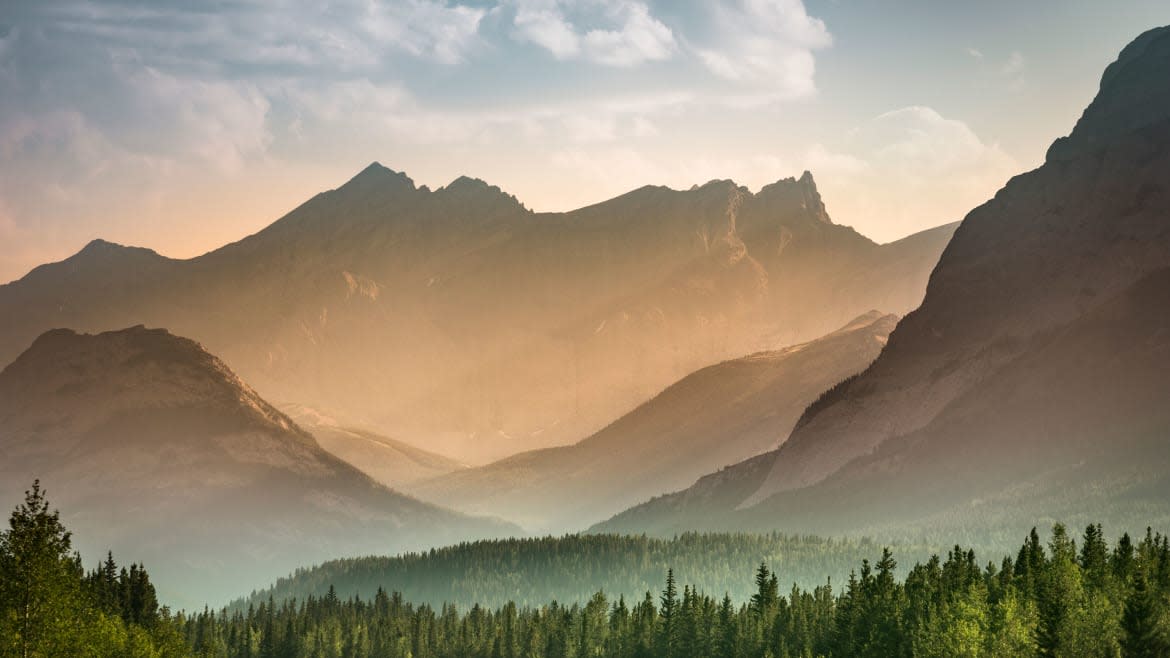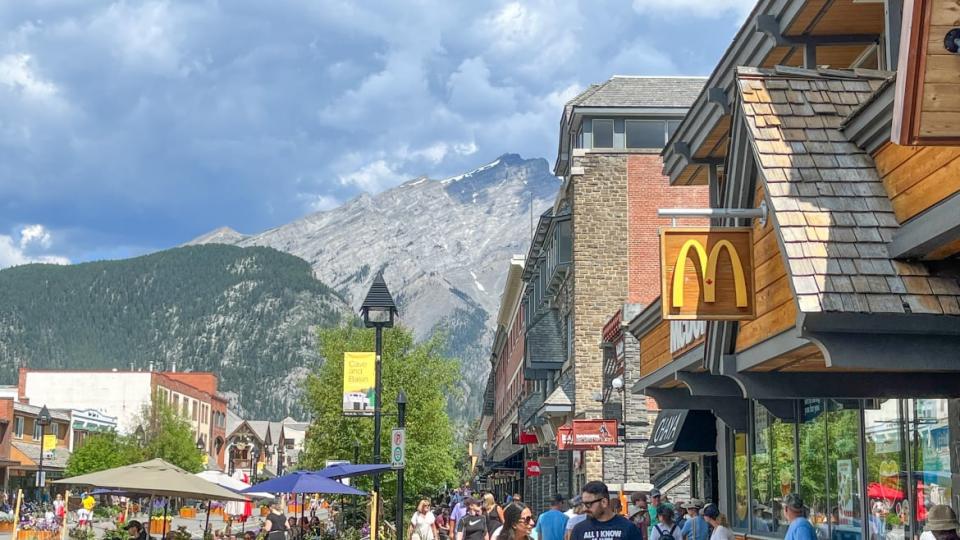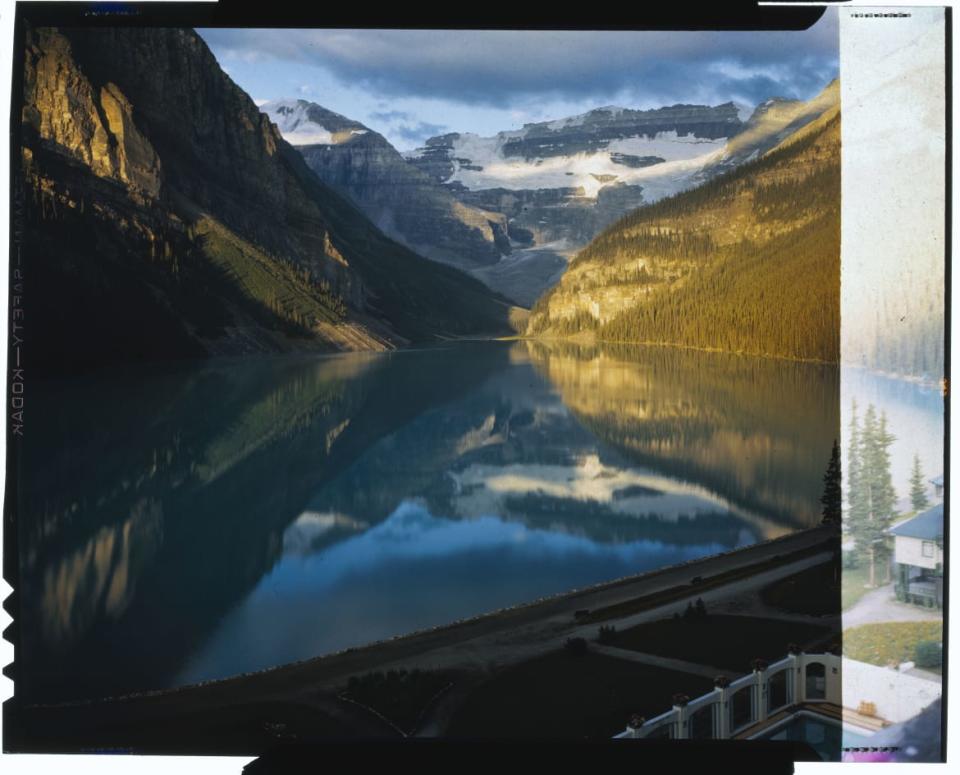If You Love the Great Outdoors, Don’t Go to Banff

After a few days in Banff we were, for all practical purposes, sick of it, so we decided to go see the new Thor movie. At some point the plot bussed us to New Asgard—home of the refugees from the titular god’s native world—which director Taika Waititi hilariously portrays as one of those quaint little tourist destinations where people flock to pay top dollar for a theme-park burlesque of what they imagine the town to be, complete with cruise ships, souvenir vendors, and corporate sponsorship.
It's just like Banff, I thought as the camera wandered through this tourist trap parody. Suddenly my girlfriend leaned close to my ear.
“It’s Banff,” she whispered.
Then someone groaned several rows in front of us: “It’s so Banff.”
Later when we went for dinner (hamburger $22, add on fries for another $8) our server asked if we were from the area. I started to explain that I had come to write about it, and he rolled his eyes.

“Please tell me you’re not one of those travel writers who’s gonna go tell everyone how great Banff is and that everyone should come here.”
I’ve traveled to and written about many places, but I’d never heard that one before.
Tucked in the mountains about 90 minutes northwest of Calgary, the landscapes of Banff National Park are about as stunning as they come. Long a popular destination among skiers and other outdoor enthusiasts, it’s become one of Canada’s hottest tourist attractions, drawing some 4 million people each year.
“Have you seen Banff?” a different server in the nearby—and slightly less touristed—town of Canmore asked when I noted how busy all the restaurants were. “You can’t even walk down the streets on the weekend.”
If the town of Banff itself is crowded, the natural wonders nearby are overrun. I visited in July, and every scenic overlook I passed was jammed to capacity, as was every campground. There was a steady stream of cars driving up the gorgeous Icefields Parkway to see the glacier that is rapidly dripping away due to the Big Heat. And if you want to see the region’s most famed attraction—Lake Louise—you need to either arrive before sunrise to get parking or reserve a seat on the shuttle from town many months in advance. It’s basically impossible to go see it on the fly.
I got a hint of the crowds to come when I initially flew into Canada. While going through passport control the customs agent asked about our plans, and we told him we were heading to Banff.
“Do you have reservations?” he asked with the sort of skepticism that you’d expect from the host at some exclusive restaurant. When we said that we just planned on winging it, he shook his head. “Good luck with that. Summer reservations open in early May and there are people who set their alarm so that they’ll wake up in time to book the minute they can. Otherwise everything usually books up immediately…”
At the time I brushed this off as exaggeration, but now I understood what he meant.

Canada’s Lake Louise and Alberta Victoria Glacier.
As the server who brought the $30 burger and fries informed me, the rush of visitors has been overwhelming in the wake of the pandemic lockdowns as most businesses are still struggling to restaff. The local service industry is drowning under a flood of tourists, and while a number of service workers I spoke with admitted that the influx of money is necessary after the economic devastation of COVID, the atmosphere of stress is palpable. Dinnertime in Banff is a chaotic feeding frenzy during which resolute restaurant workers fling out the chum as fast as the sharks will devour it. All the establishments are filled to the brim and those who are late to enter the gastronomic fray are fated to long waits or else wandering the street with restless hunger searching for someplace with an open table.
All of this busyness and business is making it increasingly difficult to minimize the damage to the natural spaces around Banff, which has been the mission of the regional conservation group Bow Valley Naturalists for over 50 years. When I asked BVN spokesperson Reg Bunyan about the explosion of tourism, he corrected me.
“I’m not sure the correct word is ‘explosive’ tourism. Banff’s visitation has been consistently growing for years rather than ‘exploding,’” he explained. “I think the idea of a visitation explosion stems from the perception that we have now reached—or we are now exceeding—peak visitation capacity thresholds and the impacts are finally too obvious to ignore. These include impacts on community culture, degraded or overwhelmed visitor facilities or experiences, and ecological impacts on the surrounding environment.”
I can attest firsthand to that degradation. If you love the outdoors, Banff is a frustrating experience. While replete with vantages and natural opportunities that would be otherwise awe-inspiring, it’s difficult to appreciate the awe when you’re forced to elbow your way through a parking lot crowded with busload after busload of tourists in order to behold a waterfall that is partially obscured by a line of pilgrims on the voracious quest to feed the Gram.
At the same time, who am I to say who should or shouldn’t be out in the wild? (Or at least as close to the wild as any place with a Lululemon shop can be…) They have just as much right to be there as I—the pretentious outdoorsman—do. Am I not, to some degree, just as much a part of the problem as everyone else?
“It’s a complex issue,” Bunyan admits, “and while there is likely no simple solution, the first step—as with any issue—is an acknowledgment that there is a visitation problem and that the park does not have an infinite capacity for tourism growth. Banff is in the unfortunate position of being the primary tourism driver in Alberta and the powerhouse for Parks Canada’s own internal revenue generation. So even a simple acknowledgment of the issue of limits to tourism growth is stymied by various levels of government politics and segments of the business community. We cannot move forward on a suite of solutions until there is an acknowledgment of the issue.”
So let’s face it: There’s an issue. It’s the same issue that one encounters in Yellowstone and Yosemite, on the beaches of Tulum, and the islands of Thailand. Humanity’s lack of natural management—of downright restraint in regards to the most photogenic of outdoor spaces—is destroying them, making them intolerable, and driving up the costs of visiting them to the point where natural experiences are increasingly relegated to the few who can afford them.
What, then, is the solution?
“Ultimately the agency responsible for managing national parks has to drive the issue,” says Bunyan. “That is Parks Canada. The challenge is that the concept of ‘people who visit national parks will be far more likely to support national parks’ is deeply embedded within Parks Canada‘s corporate culture, which makes it very hard for them to put the brakes on visitation. And while there is likely a grain of truth in the concept, you don’t have to be a philosophy graduate to see the flaws in that argument.”
Parks Canada did not return a request for comment on any plans to mitigate crowds.
On the final day before I left Banff, I stopped in the only laundromat in town to freshen up my duds for the road. It was empty when I arrived just after they opened, but by 10 the place was a madhouse. At some point an argument erupted between two patrons over a mistake one had made with a machine that would delay the other by half an hour.
“This means,” the inconvenienced woman nearly sobbed, “that I’ll miss my shuttle to Lake Louise. I booked that seat months ago.”
That, in a nutshell, is Banff: overcrowded with people who have invested a lot to be there, only to discover upon arrival that it’s too busy to actually do—let alone enjoy—anything.
In the two weeks I was in the area I never did see Lake Louise. As it turned out my favorite experience came well outside the park while camped along some random logging road where locals go to buzz around on ATVs. There I watched as an enormous blonde bear grazed with its cub.
It was very peaceful, and very beautiful.
Get the Daily Beast's biggest scoops and scandals delivered right to your inbox. Sign up now.
Stay informed and gain unlimited access to the Daily Beast's unmatched reporting. Subscribe now.

 Yahoo News
Yahoo News 
